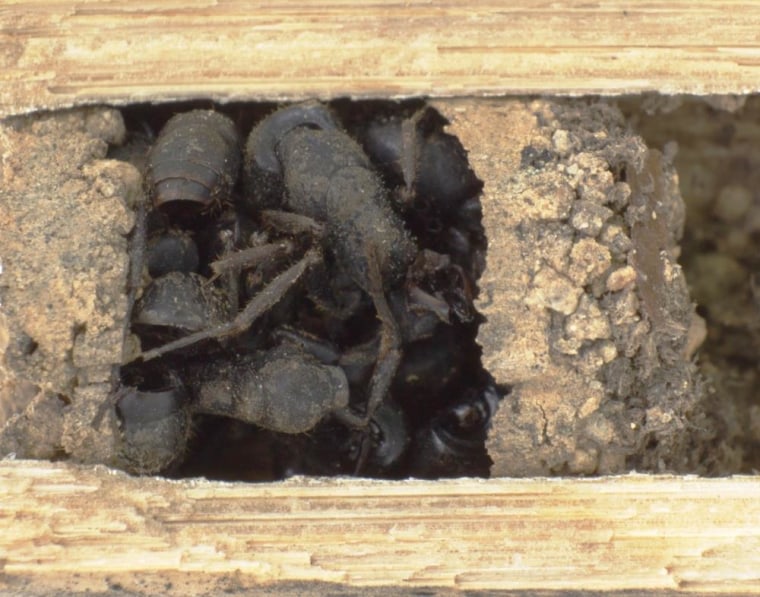A newly discovered wasp has been keeping a gruesome secret: It stuffs ant corpses into the walls of its home.
As far as scientists know, the behavior is unique in the animal kingdom. The new creature has been named Deuteragenia ossarium, or the "bone-house wasp," after the historical ossuaries piled high with human skeletons found in monasteries or graveyards. "It was a totally unexpected discovery," said Michael Staab, a researcher at the University of Freiburg in Germany. [ Zombie Animals: 5 Real-Life Cases of Body-Snatching ]
Sign up for top Science news delivered direct to your inbox
Staab had been studying the homemaking habits of cavity-nesting wasps in eastern China, and he and his colleagues had set up trap nests in the Gutianshan National Nature Reserve, a subtropical evergreen forest in the Yangtze River Basin that's home to steep cliffs and animals like clouded leopards and Asian black bears.

Cavity-nesting wasps may live in self-made holes or pre-existing tunnels in plants or pieces of wood. These cavities typically contain several brood cells — the wasp equivalent of a single hexagon in a beeswax comb — which are separated by thin walls made of bits of plant, resin or soil. Scientists have even found bits of insects in the mix.
But when Staab's team collected the trap nests, they found something unusual: In 73 of the nests, the researchers discovered an outer cell packed with the whole bodies of dead ants. The species behind the corpse houses was a spider-hunting wasp previously unknown to science. The findings were detailed Wednesday (July 2) in the open-access journal PLOS ONE.
— Megan Gannon, LiveScience
This is a condensed version of a report from Live Science. Read the full report. Follow Megan Gannon on Twitter and Google+. Follow us @livescience, Facebook & Google+.